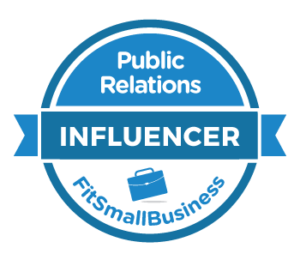I attended a meetup recently that featured a speaker who had once been a Gartner analyst.  He shared his insights about the inner workings of the firm, and how to get the most out of analyst relations programs. It was great info, and relevant for companies seeking to improve their standing and results with analysts and enterprise IT decision-makers.
He shared his insights about the inner workings of the firm, and how to get the most out of analyst relations programs. It was great info, and relevant for companies seeking to improve their standing and results with analysts and enterprise IT decision-makers.
Our clients often ask about how to get listed and/or favorably positioned in the vaunted Gartner Magic Quadrant. Of course, there are other analysts, and recipes for organizing and ranking the tech field (Forrester Wave reports come to mind). But Gartner warrants special attention, as they are the largest, and seem to be at the top of the heap.
So, I decided to write this post and share what I learned. I am not naming the speaker, or including everything that he covered. It summarizes key takeaways, in my own words (except for the quotes – those were indeed said at the session).
(Note: if you are interested in the back story, the former analyst replied very enthusiastically when I pitched him the idea for this post right after the talk. So I drafted and sent it to him… and was met with radio silence, despite several phone call and email follow-ups. Perhaps he was afraid of the reaction from his former employer and got cold feet. I am not sure why – nothing here is that earth shattering or outrageous.
While I would have much preferred to write this with his name and full cooperation, better to share the information as an anonymous confessional than not at all; it is just too important to hold onto, and was presented in a public forum, so it is fair game, in my opinion).
Read on for the tips from the session, and I hope that you find them useful.
Why care about analysts – and Gartner?
They are extremely influential. The speaker cited Hill and Knowlton annual surveys, which consistently show that analysts have the most impact when it comes to enterprise IT purchasing decisions, compared with other sources of influence/info.
Gartner is at the top of the analyst heap, with billings of about $1.6B / year. Forrester is a distant second.
Interestingly, Gartner also holds sway over SMBs – even though the firm chiefly covers tech used by large enterprises. They reap the benefits of buzz and PR, gained from all those who proudly shout their Gartner validation from the rooftops.
Why care about the Magic Quadrant?
It is one of Gartner’s flagship offerings, and the lens through which they view and rank the tech world. The quadrants map to technology segments and have grown in number, from 15 when the former analyst was there in the late 80s-90s to about 800 today (“their analysts know more and more about less and less”).
Getting favorably positioned (“lower left is for losers”) can mean good things.
If you somehow don’t qualify to be listed in a quadrant – e.g. due to insufficient revenue (“you need at least $10-15M/year”) you still can make a Cool Vendor report. These were developed specifically to help Gartner stay close to the startup space.
Engage, Don’t Brief Analysts
How can you influence these über-influencers?
First, don’t lump them in with the media – they hate being relegated to “press and analyst relations”. Analysts are not neutral, like the media are supposed to be – they have strong opinions (“and hence can make terrible dinner guests.”) They don’t like working with marketers.
According to the speaker, an “engaged analyst is an influenceable analyst.” They like to be consulted about product decisions. Analysts love talking to CEOs about their vision, and generally don’t like getting deep into the tech weeds.
Here are some other points:
- They want to feel they have input on product design, and might point out the holes if you don’t seek their counsel
- Make sure they honor an embargo or sign an NDA before you share confidential info
- “You can’t say ‘you’re wrong’ to an analyst. If you bring proof and hard data, fine, otherwise they’ll go with their opinions.”
Is it Pay for play? Just Follow the Money
Analyst firms will typically grant vendors one free formal briefing (i.e., booked through their account team) per year. Take the briefing, but you will get pressure from their sales staff to sign up.
Also, you can meet with them at other times informally – e.g. at trade shows, based on personal relationships and direct contact.
The entry level cost for a major analyst like Gartner is about $15-20K. Add the cost of the A/R firm, which can rival the above fee. Someone once studied and estimated total costs associated with getting into the desired Magic Quadrant; it could be $500K, when you include executives’ time and resources.
Lest you think it sounds like one big protection racket, the speaker dismissed this and said, essentially, follow the money: the firms get most of their revenue – like 80% – from advising enterprises.
They have to shoot straight or they will jeopardize the cash cow. Also, it is a fact – I know this from our clients – that you can spend hundreds of thousands of dollars with Gartner or others and not get listed the way you want. Conversely, many who don’t pay get ranked very favorably.
Steal This Category
Finally, I had to know, and asked during the Q & A: how do new quadrants get minted?
We often have clients that don’t fit neatly into a segment. They might be disrupting an existing area, or inventing a new one. Is it wildly unrealistic to get Gartner or others to conform to your worldview? Perhaps even get behind your definition of the new area, and help you promote it?
The speaker said that new quadrants are generally spawned bottom up. Analysts toiling in the trenches may see the opportunity to launch one if they identify something like eight vendors that don’t fit neatly elsewhere.
They are the ones who invented the TLA, and are partial to their own inventions and definitions.
Vendors almost never successfully invent categories on their own; it would be a great outcome if the analyst stole their idea for a category, the ultimate tribute.
 coders garner huge salaries and entrepreneurs achieve the American Dream?
coders garner huge salaries and entrepreneurs achieve the American Dream?









